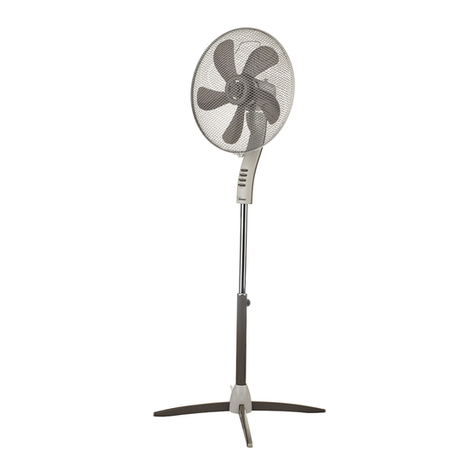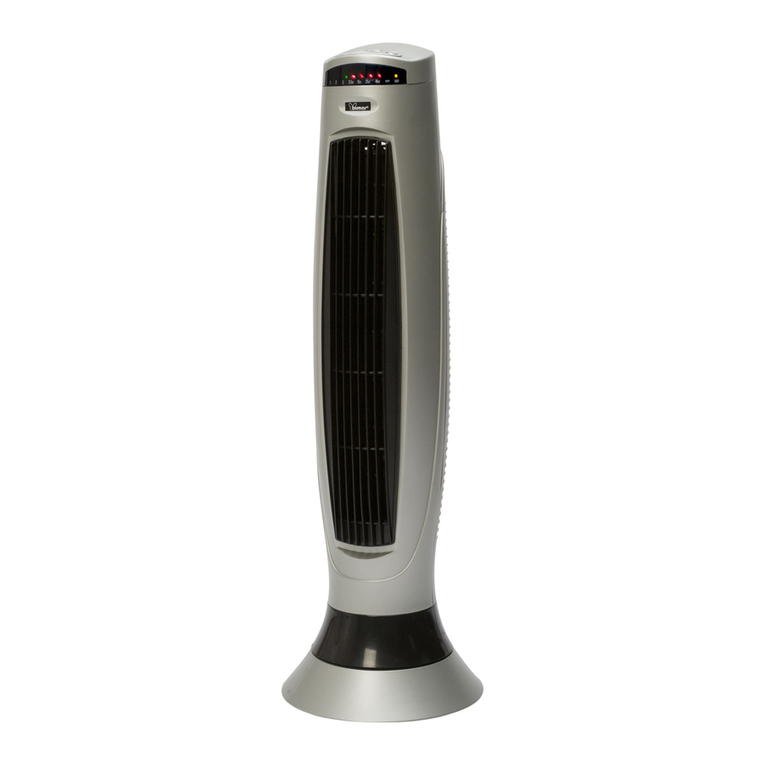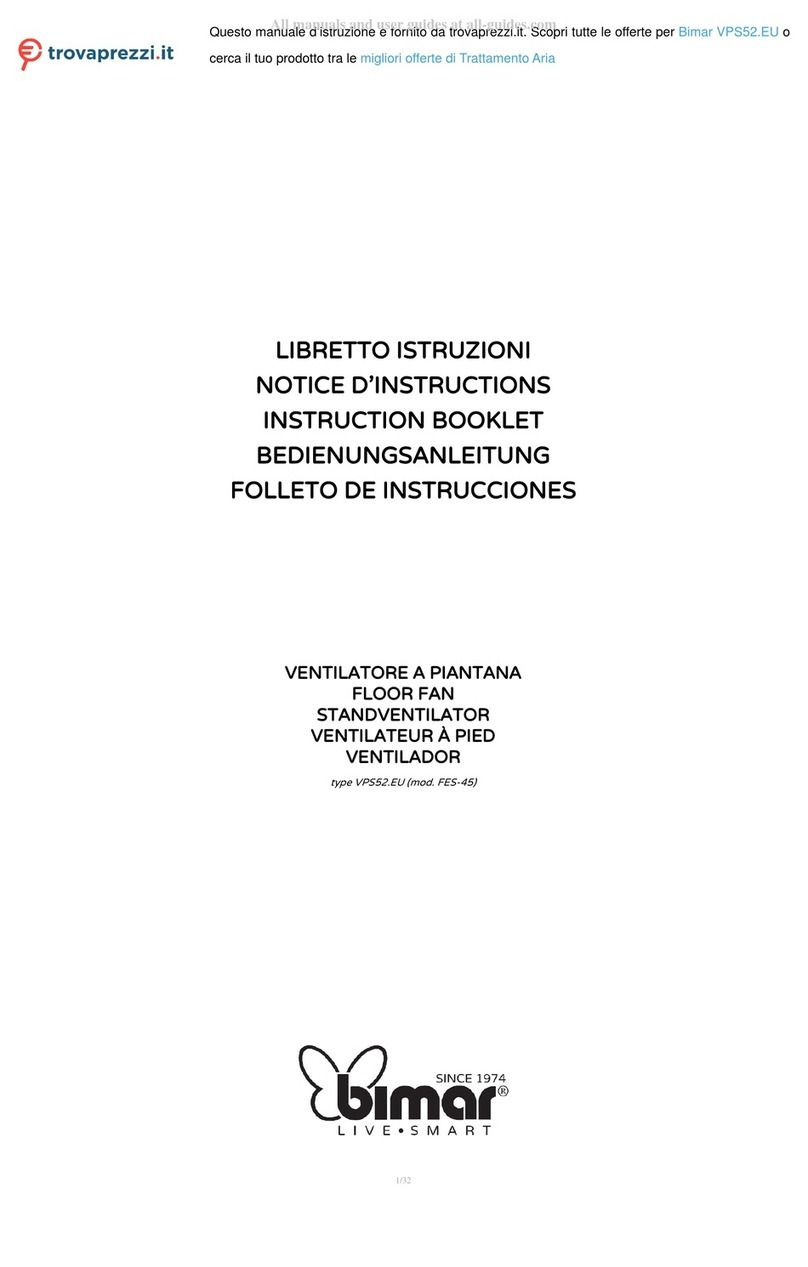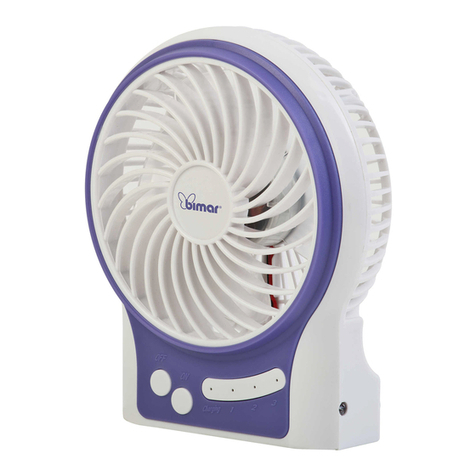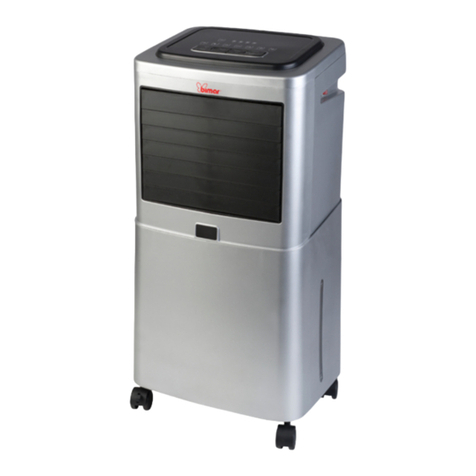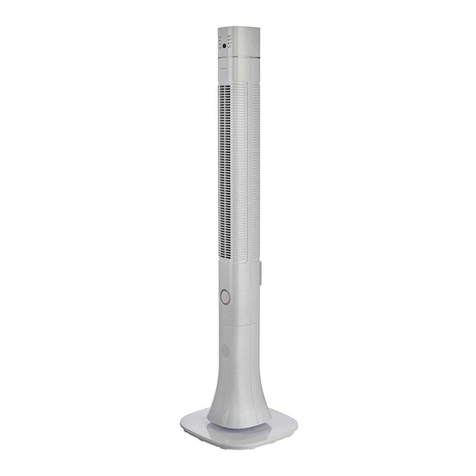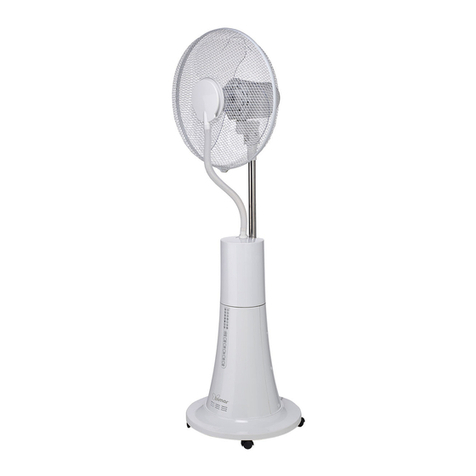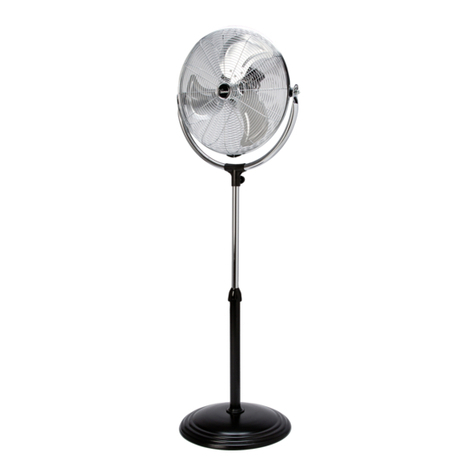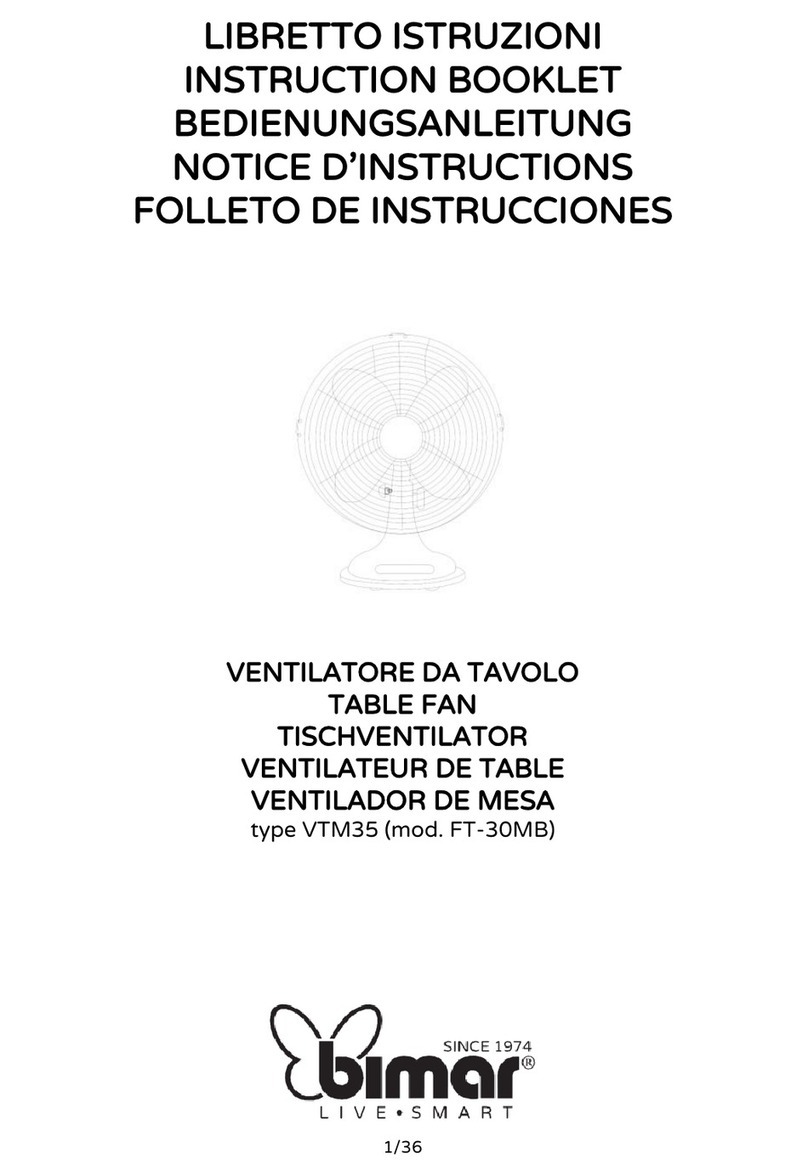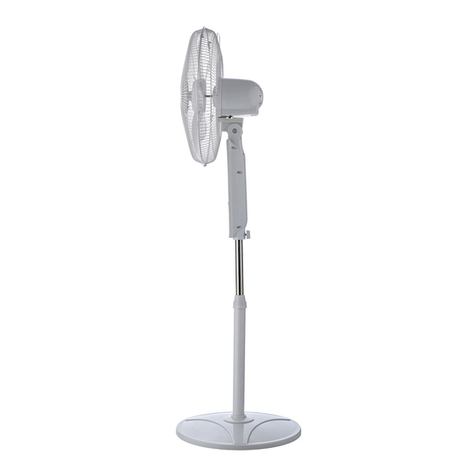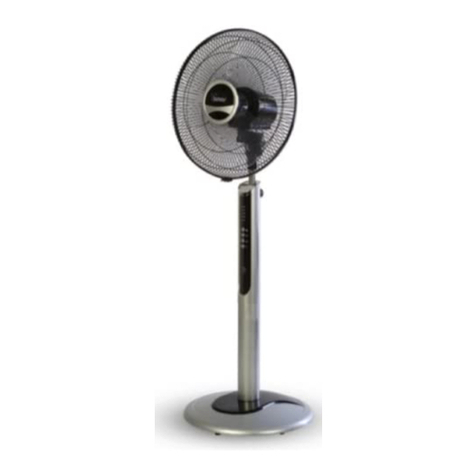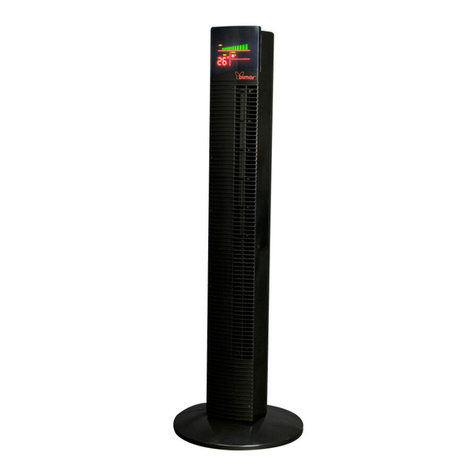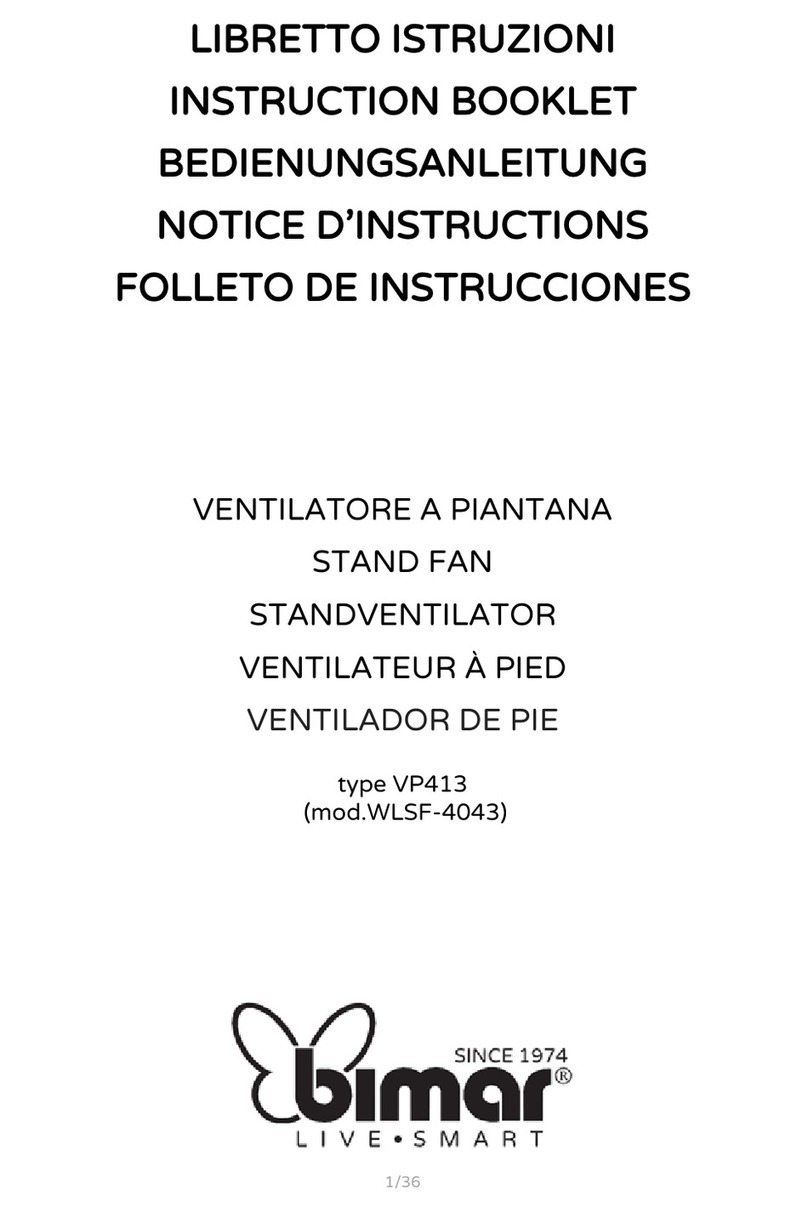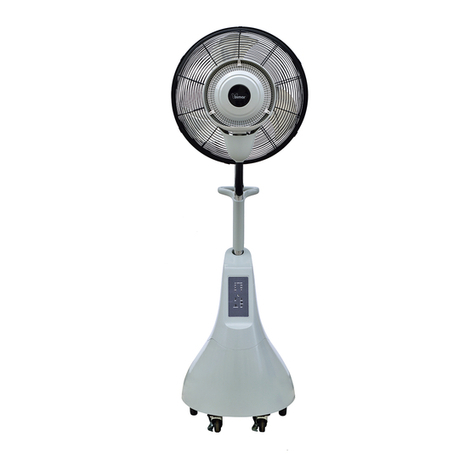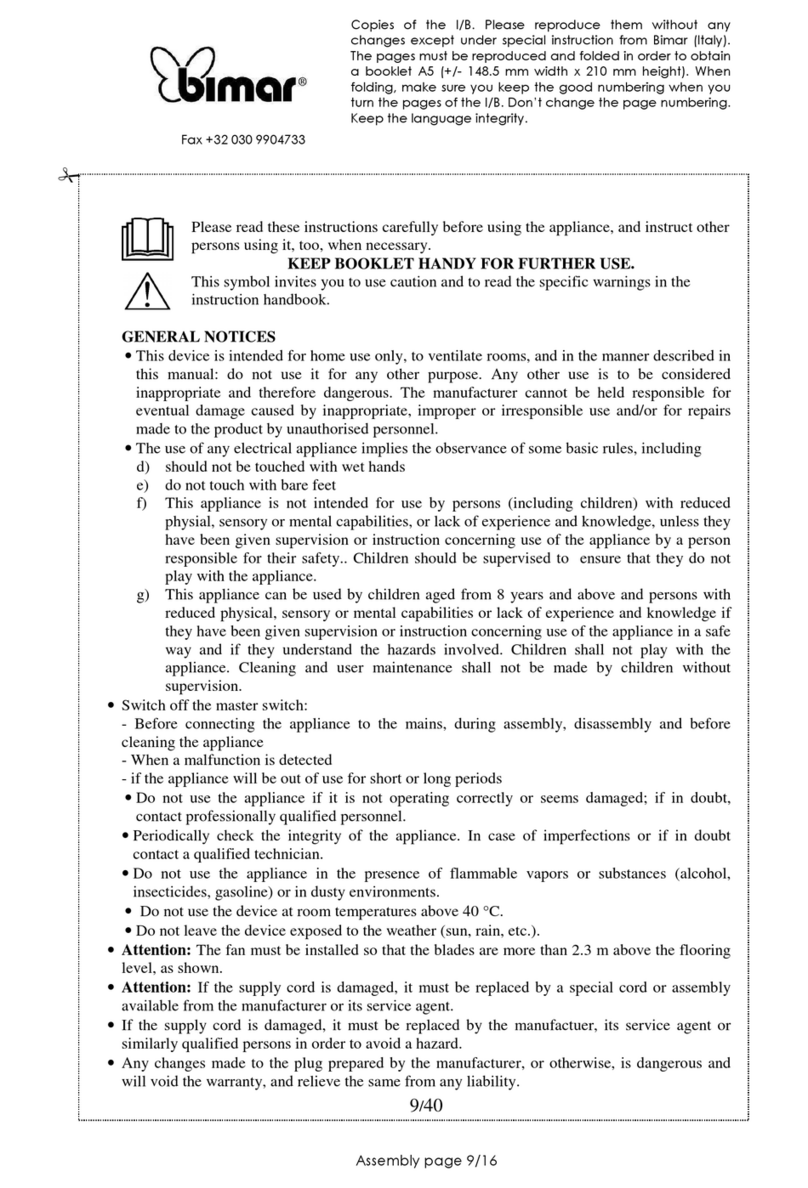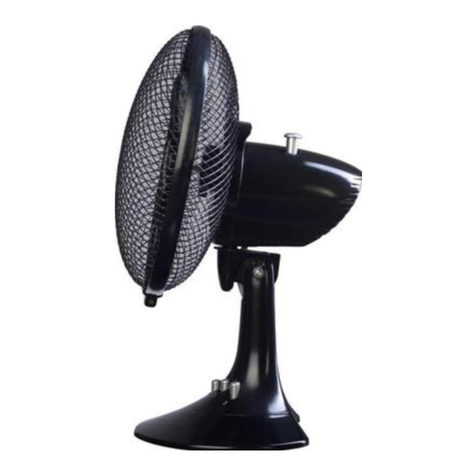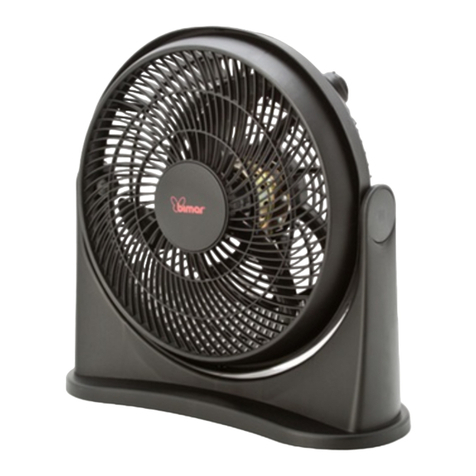
•Se il cavo di alimentazione è danneggiato, esso deve sostituito dal
costruttore o dal suo servizio assistenza tecnica o comunque da una
persona con qualifica similare, in modo da prevenire ogni rischio.
•Questo apparecchio non è destinato a essere fatto funzionare per mezzo
di un temporizzatore esterno o con un sistema di comando a distanza
separato, per evitare il rischio di incendio nel caso l’apparecchio sia coperto
o sia posizionato in modo non corretto.o ad altro dispositivo che possa
accendere l’apparecchio automaticamente, evitando così rischi di danni a
persone, animali o cose.
•In caso di guasto o cattivo funzionamento spegnere l’apparecchio e farlo
controllare da personale professionalmente qualificato; le riparazioni
effettuate dapersonale nonqualificatopossonoesserepericoloseefanno
decadere la garanzia.
•Assicurarsi che il ventilatore sia scollegato dalla rete di alimentazione
primadi togliere lo schermo di protezione.
•Dopo aver tolto l’imballaggio, assicurarsi dell’integrità dell’apparecchio; in caso di dubbio non
utilizzarlo e rivolgersi a personale professionalmente qualificato. Gli elementi d’imballaggio
(sacchetti di plastica, polistirolo espanso, chiodi, ecc.) non devono essere lasciati alla portata di
mano di bambini in quanto potenziali fonti di pericolo, ma vanno smaltiti secondo le norme
vigenti negli appositi contenitori per la raccolta differenziata.
Tutti gli elementi dell'imballaggio vanno smaltiti in base alla propria materia prima (vedi il
simbolo impresso su ciascuno) e in base alle disposizioni del proprio Comune. Il sacchetto
contenente la colonna oppure altre parti, che per le misure ridotte è privo di marcatura, per il
suo smaltimento seguire le disposizioni del proprio Comune.
: eventuali adesivi o fogli pubblicitari applicati sulla griglia, devono essere rimossi
prima dell’uso dell’apparecchio.
•Prima di collegare l’apparecchio controllare che i valori di tensione riportati sulla targa dati
corrispondano a quelli della rete elettrica e che la presa sia dotata di efficace messa a terra. In
caso di incompatibilità tra la presa e la spina dell’apparecchio, far sostituire la presa con altra
di tipo adatto da personale professionalmente qualificato, il quale accerti che la sezione dei cavi
della presa sia idonea alla potenza assorbita dall’apparecchio. In generale è sconsigliato l’uso
di adattatori e/o prolunghe; se il loro uso si rendesse indispensabile, devono essere conformi
alle vigenti norme e la loro portata di corrente (ampères) non deve essere inferiore a quella
massima dell’apparecchio.
•Prima di ogni utilizzo verificare che l’apparecchio sia in buono stato, che il cordone elettrico
non sia danneggiato: in caso di dubbio rivolgersi a personale professionalmente qualificato.
•La presa di corrente deve essere facilmente accessibile in modo da poter disinserire con facilità
la spina in caso di emergenza.
•Non posizionare l’apparecchio su mensole e/o in prossimità di lavandini o contenitori di liquidi
(distanza minima 2 metri) per evitare il rischio che vi possa cadere.






